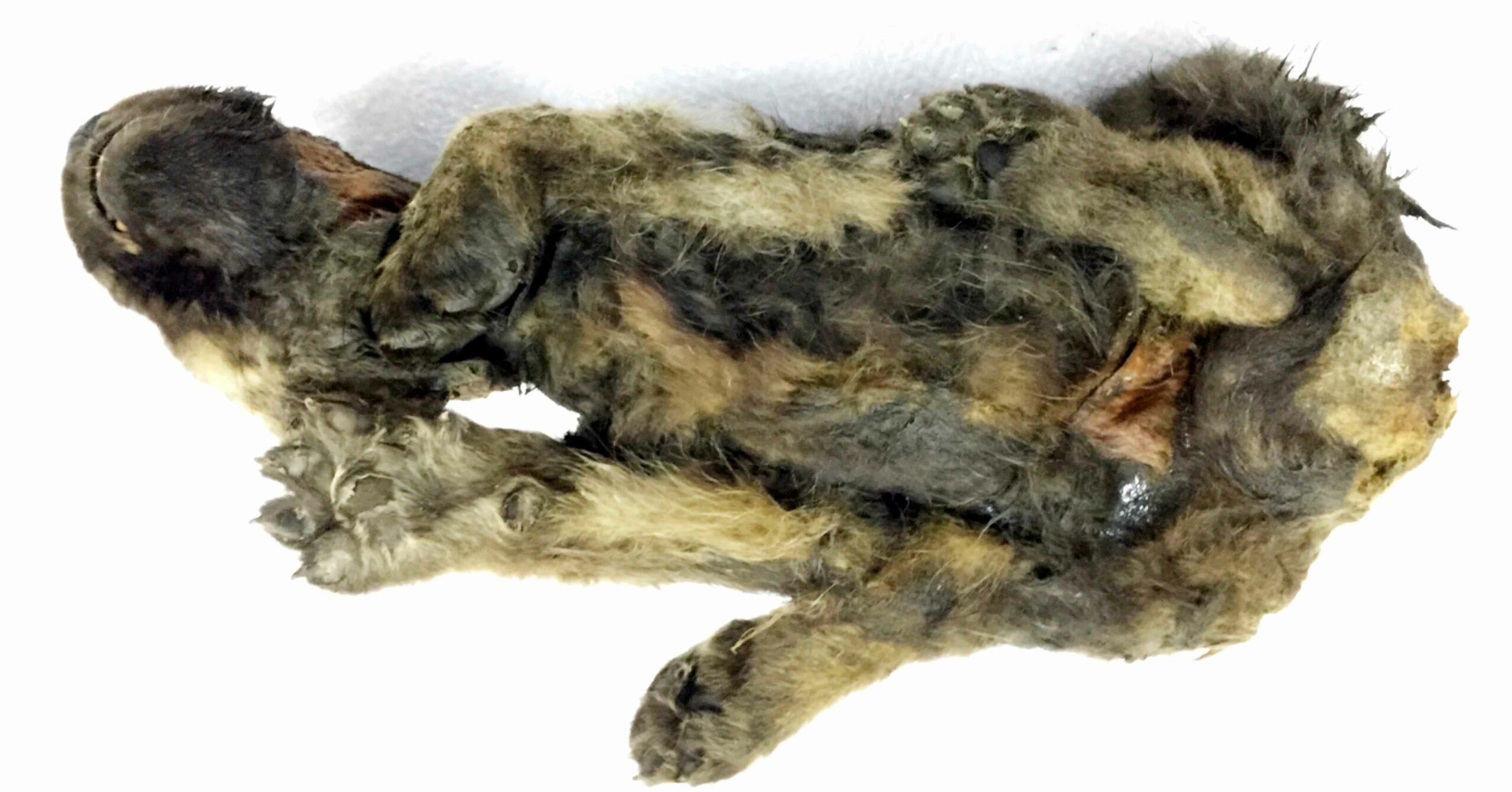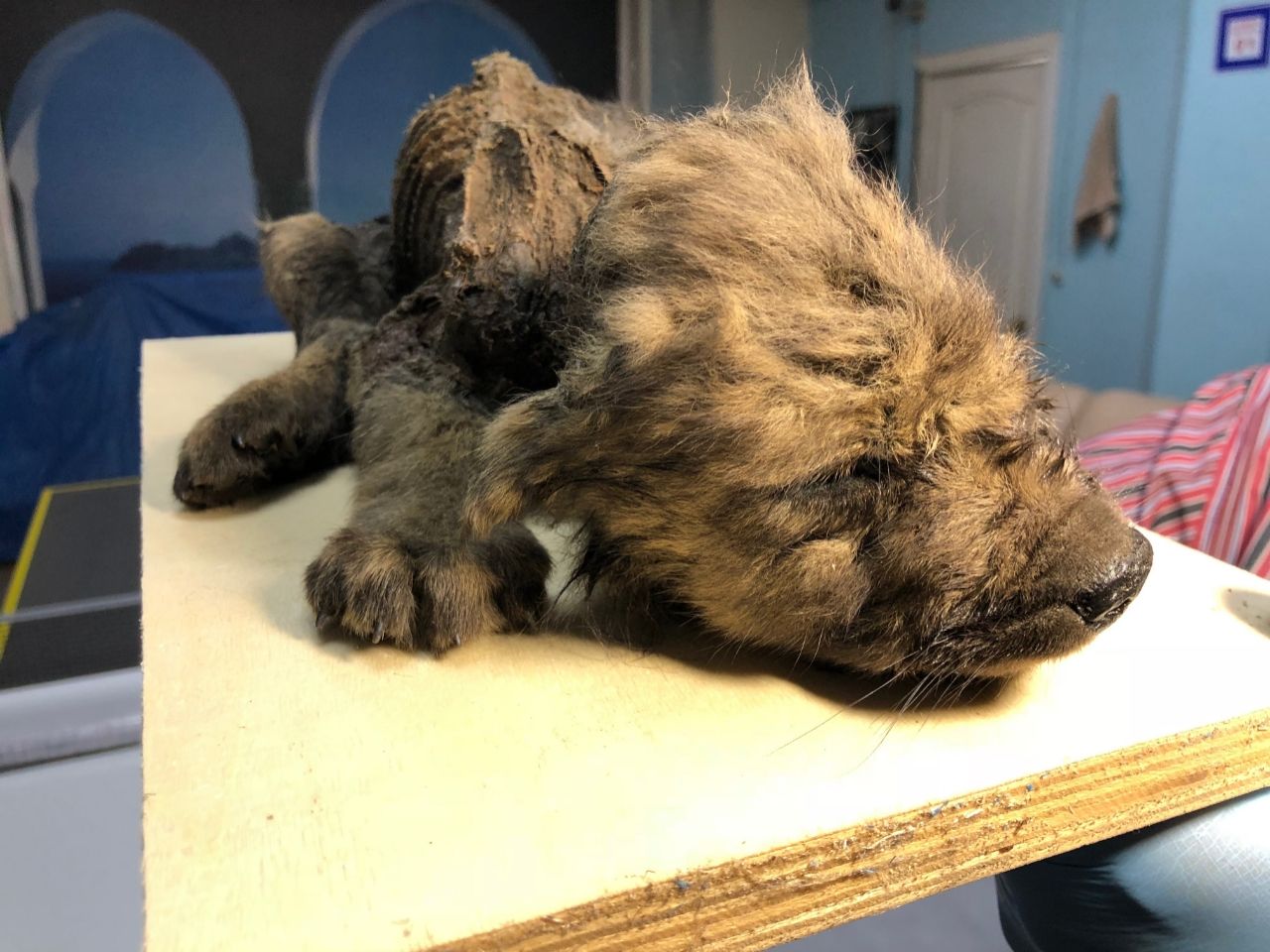A little puppy that spent 18,000 years buried in Siberian permafrost is remarkably lifelike and pettable for a freeze-dried mummy. The Ice Age canine’s remains emerged from its frozen tomb in near-perfect condition, with even the pads and nails on its small feet and plenty of hair, down to its tiny eyelashes and delicate whiskers.

The pup still had its milk teeth, suggesting it was under 2 months old when it died. © Sergey Fedorov / The Siberian Times / Fair Use
The pup still had its milk teeth, indicating that it was less than two months old when it died; the body is so well preserved that its likeness to a wolf is clearly obvious, according to The Siberian Times. But is the youngster a wolf… or a dog?
Dogs are descended from wolves, and ancient DNA evidence suggests that their lineage split from their lupine progenitors as early as 40,000 years ago. According to the Times, scientists at the University of Stockholm’s Centre for Palaeogenetics conducted genetic testing on the Siberian pup’s remains but were unable to determine whether the mummy represented a dog or a wolf.
The DNA tests revealed that the pup was a male. According to the Times, they named it “Dogor” – “friend” in Yakut – but in English, the moniker refers to the mummy’s unclear status: dog or… something else.
The mummified pup was discovered along the Indigirka River in Yakutia, Russia’s northern region, in the summer of 2018. Another research team claimed in 2017 in the journal Nature that the oldest known fossil of a domesticated dog dates back 14,700 years, however, remains of dog-like canines date back 35,000 years.
According to the findings, dogs diverged genetically from their wolf relatives between 36,900 and 41,500 years ago.

What does this signify for Siberian puppies? According to the Times, a mummified canine going back 18,000 years could be a dog, a wolf, or even a transitional form – an animal combining characteristics of both kinds.
“This is intriguing,” said Sergey Fedorov, a researcher at Russia’s North-Eastern Federal University and one of the specialists looking into the puppy. “We can’t wait to see the results of additional tests,” he told the Times.
Preserved in ice

Melting permafrost in Siberia has exposed some surprisingly well-preserved instances of prehistoric species in recent years. Paleontologists discovered an incredible mummy of a juvenile horse in Yakutia in 2017; the 2-month-old foal lived 30,000 to 40,000 years ago, and its body was entire and uninjured, with its skin and hooves intact.
In 2018, a man looking for mammoth tusks came across the mummified of a baby Ice Age feline. The species of the wild kitten, like the newfound puppy, is unknown, but specialists believe it could be a cave lion or a Eurasian lynx.
Then, in June, a man wandering by a river in Russia’s Yakutia discovered the massive, severed head of an Ice Age wolf going back more than 40,000 years.
The frigid Siberian wilderness has revealed something even more horrible than ancient animal remains: a bag containing 54 severed human hands, discovered in 2018 buried in snow on a river island. The hands, unlike the Ice Age mummies, were likely abandoned unlawfully by a neighboring forensic lab, according to Russian authorities.



